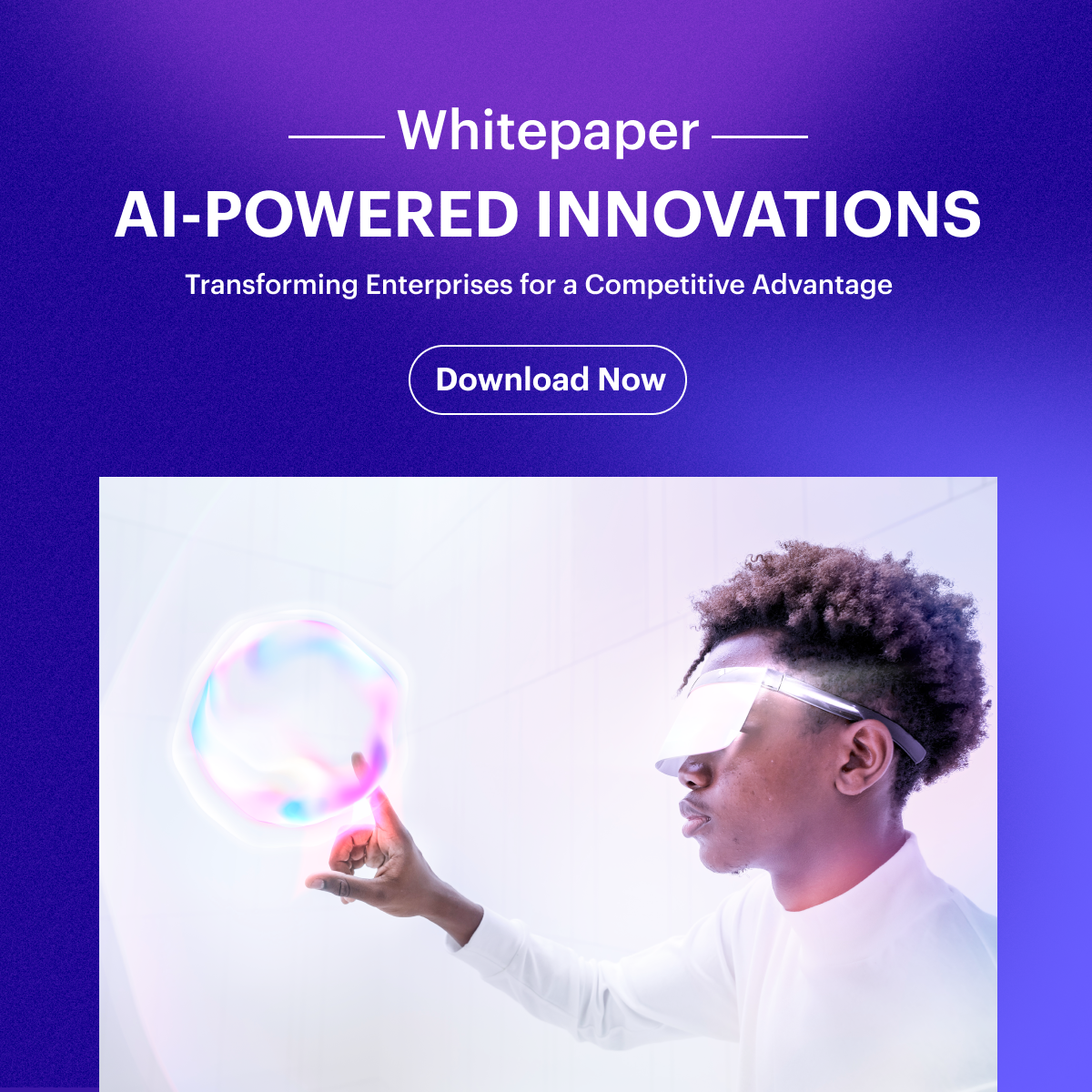Data Science
Python vs. R for Data Science: Choosing the Right Tool for Your Analytical Journey
 Updated 01 Nov 2023
Updated 01 Nov 2023

In data science, effectively managing extensive datasets to gain valuable insights is critical for informed decision-making. This requires the selection of a good analytical tool that helps gain comprehensive insights to ensure greater accuracy. Python and R are two emerging options that you will find when looking for top-level data analysis tools. Every toolkit includes libraries with a powerful ecosystem and a dedicated community.
The decision between Python and R significantly influences your analytical journey, enhancing versatility, efficiency, and the breadth of possibilities. In this blog, we will conduct an in-depth comparison of Python and R, considering factors such as strengths, capabilities, data manipulation, and more. Our goal is to help you select the tool that best aligns with your requirements for improved decision-making.
What is Python?
Python is one of the most sought-after and versatile programming languages and has gained a great reputation for its readability, simplicity, and a large ecosystem of tools and libraries. A Python software development company leverages these tools and libraries to create cutting-edge solutions. These tools are suitable for data analysis, visualization and manipulation. Python plays an important role in data science. As an indispensable tool for data science, it streamlines the data analysis process and makes it effortless.
Power of Python: Advantages You Can’t Ignore
1. Easy to Read and Learn
Due to the clean and simple syntax of Python, it’s ideal for beginners. Its code is available in plain and simple English making it easily accessible to individuals from diverse backgrounds. So, a Python mobile app development company develops hassle-free software. Such simplicity makes the learning curve easy for aspiring data scientists to grasp design concepts and work on real problems. Therefore, those who plan to enter this field prefer to go with Python.
2. Community Support and Documentation
Another advantage of Python is its largest community support. Its community thrives continuously with increasing numbers of developers and data scientists. Community support indeed matters a lot, especially when it comes to tackling problems, finding solutions, and staying up-to-date with the new developments in the field of data science. Data scientists find online resources and extensive documentation with Python, which helps them deal with troubleshooting by learning new techniques.
3. Extensive Frameworks and Libraries
As mentioned, Python is available with a robust ecosystem of frameworks and libraries designed mainly for data science. Some of the popular ones include Pandas, NumPy, Matplotlib, SciPy, Seaborn, and many others. These are indeed quite useful for data visualization and manipulation. It also includes PyTorch and TensorFlow for deep learning and sci-kit-learn for Machine Learning (ML). These libraries work effectively to simplify the use of machine learning algorithms and even the analysis of complex data. It plays a crucial role in saving precious time for data scientists. A Python web development company frequently leverages Python’s frameworks and libraries to develop varieties of solutions.
4. Cross-Platform Compatibility
Since Python is a cross-platform language, it reflects that code even written on a particular platform can work on other platforms as well with or without modification. This kind of flexibility matters for data scientists a lot for letting them work on multiple operating systems or collaborate with their colleagues who use different setups. It, on the other hand, enables Python development services providers to create cross-platform apps.
5. Highly Scalable
Python is scalable and caters to the diversified needs of professionals whether they deal with a large-scale or a small-scale project. Python is capable of handling a higher amount of datasets and even complicated computations with higher efficiency. In addition, its distributed computing abilities and multiprocessing makes it an ideal choice for parallel processing and distributed computing, which further boosts its scalability.
6. Vast Integration Capabilities
Whether you want to integrate Python with databases, other languages, or technologies, you can do it seamlessly. It enables the creation of end-to-end data pipelines, which helps data scientists to retrieve, connect, and visualize data, and process from different sources without putting hard effort.
7. Data Visualization
As far as data visualization is concerned, it’s considered to be a great aspect of data science since it helps convey insights most effectively. Python provides a range of visualization libraries including Seaborn, Matplotlib, Plotly, etc. It enables data scientists to develop a fully informative and appealing chart and plot. These libraries provide great support for interactive visualization, which is indeed useful for exploratory data analysis.
Python’s Potholes: Exploring Limitations and Workarounds
1. Memory Intensive
Python is known for being memory-intensive, especially when you handle a large amount of datasets. It causes several performance issues and also may need data scientists to optimize their code or consider other language options for making memory-efficiency operations.
2. Global Interpreter Lock
Global Interpreter Lock is one of the limitations of Python. It restricts the implementation of different threads within a single process of Python. It hinders the parallel data process and thus impacts the overall performance of multi-threaded applications.
3. Statistical and Data Visualization Tool
Python provides several powerful libraries for machine learning and data manipulation, which may not be perfect when compared to R.
Python: The Universal Choice for All
1. Beginners
Those who are beginners in data science and programming can select Python. Be it an easy syntax or extensive resources, Python is the right choice among beginners for various reasons.
2. Interested in Machine Learning
Python boasts powerful support for various Machine Learning libraries including TensorFlow, sci-kit-learn, and PyTorch, which make it the right language for those seeking to learn Machine Learning.
3. Need Versatility
Python can be a great choice even for those who are keen to work on a range of projects, apart from data science. Thanks to its cross-domain applicability.
4. Need Community Support
Python is well-known for its active community that ensures you will get better solutions to all challenges that you come across be it related to programming and data science.
What is R?
R, Developed by Robеrt Gеntlеman and Ross Ihaka, is onе of thе most vеrsatilе and powеrful programming languagеs. It’s famous for flеxibility and includеs unmatchеd capabilitiеs for statistical analysis, data manipulation, data visualization, and also hosts a vast еcosystеm.
Discovering R’s Superpowers: Unleashing the Advantages
1. Data Visualization
R is popular for its outstanding data visualization ability, especially with the help of packages including ggplot2. It enables data scientists to develop fully customized and publication-quality charts and graphs that are invaluable to convey insights most effectively.
2. Statistical Prowess
R comes with indispensable statistical capabilities. It includes an array of statistical packages, functions, and libraries that help it conduct complex statistical analyses, which makes it the most preferred choice for researchers and statisticians.
3. Vast Community of Scientists and Statisticians
A strong community is another great advantage of R. Its active community includes the majority of data scientists and statisticians who put continuous effort into developing the community fast. This community is a better place for those seeking learning and problem-solving techniques.
4. Rich Package Ecosystem
The Comprehensive R Archive Network (CRAN) includes several packages to cater to multiple data science requirements. Right from data cleaning to manipulation of modern statistical modeling, these packages generally include everything.
5. Reproducibility
Reproducibility is another crucial advantage of R. It’s vital for data analysis and scientific research. Data scientists can leverage tools like R Markdown to create interactive reports blending analysis, code, and visualizations.
Navigating Challenges: Understanding the Limitations of R
1. Lack of Versatility
Reproducibility is another crucial advantage of R. It’s vital for data analysis and scientific research. Data scientists can leverage tools like R Markdown to create interactive reports blending analysis, code, and visualizations.
2. Complex Learning Curve
R comes with hard syntax that’s certainly not easy to understand for beginners, especially those who don’t know anything about programming. Whether you learn or write efficient R code, it takes more time when compared to Python.
3. Performance
Handling the largest datasets or carrying out computational tasks is quite tough, especially in the case of Python. R is indeed far behind its competitor Python in terms of performance and memory management.
R: A Tailored Solution for Data Enthusiasts
You can choose R, if
1. Reproducibility is Necessary
If you are the one seeking to churn out reproducible reports or research, you need to go with none other than R. The integration of R Markdown with RStudio makes it easy to form documents that combine analysis, code, and visualizations.
2. Prioritize Statistical Analysis
If your work is related to hypothesis testing, statistical analysis, or experimental design, R can be the perfect option for you. With R, you can find specialized tools and statistical libraries.
3. Having Statistical Background
R can be the best option to opt for those who have a statistical background. If you come from a research-oriented area, you will consider none other than R.
4. Data Visualization Keeps Importance
R includes enormous data visualization abilities, especially through ggplot2, which lets you create enticing, and fully informative graphs and charts.
Wrapping Up
The above comparison of Python vs. R for data science makes everything transparent. When making your choice between these two options, it’s crucial to remember that there’s no universal solution. All you need to do is make the right selection based on specific business requirements, project requirements, and backgrounds. Choose Python if you are looking for an analytical tool with versatility, an easy learning curve, and ML support. R, on the other hand, can be a great choice for those seeking an analytical tool with data visualization, statistical analysis, reproducible research, etc.
FAQs
Q. Which language is better for data analysis, Python or R?
A. The choice between Python and R depends on your specific needs. Python is versatile and widely used for various applications, including data analysis. R, on the other hand, is purpose-built for statistical analysis and data visualization. Consider your project requirements when choosing.
Q. Is Python easier to learn than R?
A. Python is often considered easier to learn and is a great choice for beginners due to its clean and simple syntax. R, while more specialized, may have a steeper learning curve for those new to programming.
Q. Which language has a larger community and more packages for data science?
A.Python boasts a larger and more diverse community, which has resulted in a vast ecosystem of packages and libraries for data science. While R has a strong community as well, Python’s community is larger and more versatile.
Q. Which language is better for machine learning and deep learning, Python or R?
A. Python is the preferred choice for machine learning and deep learning due to libraries such as TensorFlow, Keras, and scikit-learn. These libraries provide extensive support for developing machine learning models.
Q. Are there any industries or applications where one language is clearly superior to the other?
A. While there’s no one-size-fits-all answer, R is often preferred in academic and research settings for its strong statistical capabilities. Python is more versatile and is widely used in web development, automation, and a broad range of industries.
Table of content
- – What is Python?
- – Power of Python: Advantages You Can’t Ignore
- – Python’s Potholes: Exploring Limitations and Workarounds
- – Python: The Universal Choice for All
- – What is R
- – Discovering R’s Superpowers: Unleashing the Advantages
- – Navigating Challenges: Understanding the Limitations of R
- – R: A Tailored Solution for Data Enthusiasts
- – FAQs
Need to hire offshore developers?

Explore More

Mobile Applications

